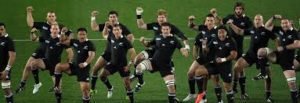Unit 3. Anxiety, Arousal, and Stress Relationships in Sport. Copy
Arousal is the key issue in sport psychology. Specifically, physical and technical performance depends on the level of the performer’s arousal. However, arousal is determined by psychological processes such as emotions, which, in turn, depend on higher cognitive functions like thoughts. Arousal reflects general physical and psychological activity. For example, a coma is a pathologically low state of arousal whereas agitation is extremely high arousal. Usually, people are somewhere in between those two extremes.
In a sport setting, arousal is often linked to anxiety. Anxiety is a negative emotional state with feelings of worry, nervousness, and apprehension that are associated with the arousal and activation of the nervous system. In general, arousal has two kinds of effects on performance. First, it increases muscle tension and affects coordination. Too much tension is detrimental to performance. Second, arousal affects attention. Therefore, attention can become either too narrow with too much arousal, or too broad with too little arousal which makes a person pay too much attention to his/her environment. There are several theories as to how arousal affects performance:
Drive Reduction Theory states a linear positive relationship between arousal and performance. This means that at low levels of arousal, performance is low whereas it increases in line with an increase in arousal. Drive reduction theory became popular during the 1940s and 1950s as a way to explain behavior and motivation.
The inverted U hypothesis proposes a relationship between arousal and performance in a symmetrical inverted U. Increases in arousal will result in the increase of performance, up to a point (optimal arousal) beyond which further arousal is dysfunctional to the outcome of performance.
Individual Zones of Optimal Functioning (IZOF) takes into account that people have different levels of anxiety and arousal that are unique in making them perform at their best. Some people perform their best with low anxiety, some with a medium amount and others with a high amount. The amount of anxiety/arousal that an individual requires to perform their best is based on individual characteristics.
Multidimensional Anxiety Theory demonstrates that when someone has anxious thoughts he/she will have poorer performance. This theory distinguishes between somatic and cognitive anxiety:
Cognitive anxiety represents the mental component of anxiety and is caused by negative expectations about success or about negative self-evaluation. Thus, cognitive anxiety is worrying and negative thoughts.
Somatic anxiety reflects physiological elements of the anxiety that develops directly from autonomic arousal. This is perceived as ‘butterflies in the stomach, tense muscles, sweating, and nausea.
The theory makes two predictions:
1. There is a negative linear relationship between cognitive anxiety and performance
2. There is an inverted U relationship between somatic anxiety and performance
Multidimensional Anxiety theory suggests that somatic anxiety should decline once the performance begins but cognitive anxiety may remain high if self-confidence is low. Anxiety felt by the body will have an effect on performance much like that of the inverted U hypothesis (see above).
The catastrophe Model (Fazer & Hardy, 1988) suggests that as long as there are lower thoughts of anxiety, then performance will be best at a medium level of physical arousal. If there is a high level of anxious thoughts (worry), performance will be better at a medium level of physical arousal but will suddenly drop off and become very poor. There is a breaking point when performance decreases dramatically.




